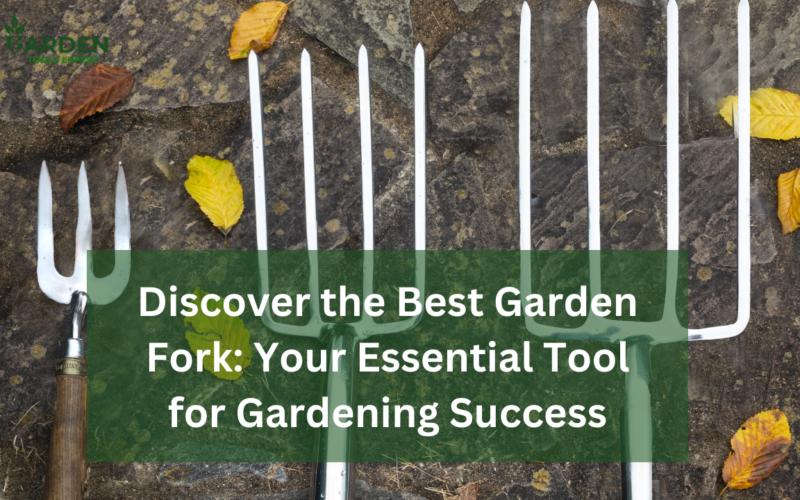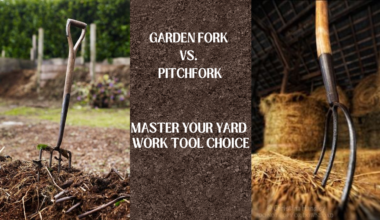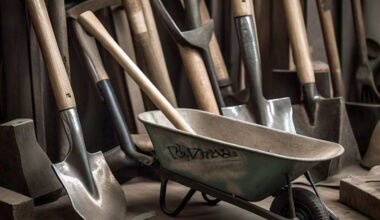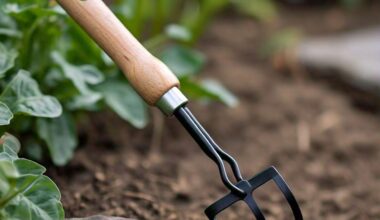Every novice or experienced gardener understands the importance of having the right tools.
Among these, a garden fork is an essential instrument for cultivating a flourishing garden.
It helps with various gardening tasks, from loosening compacted soil to aerating the earth, ensuring your plants receive the nutrients they need to thrive.
The Importance of a Reliable Garden Fork
A reliable garden fork is crucial for any gardener serious about their gardening experience. When choosing the tool, consider durability and material.
Options like carbon steel and stainless steel offer superior strength and longevity.
A well-constructed fork can withstand the rigors of digging and turning soil, making it an indispensable tool in your gardening arsenal.
Why Every Gardener Needs a Garden Fork
Every gardener needs a garden fork to perform essential tasks that other tools may not efficiently accomplish. Whether you are preparing the soil for planting root crops or turning compost, a digging fork’s tines effectively penetrate the earth. With its ergonomic design, using a garden fork minimizes strain on your back and arms while maximizing your efficiency in the garden.
Benefits of Using a Digging Fork
The benefits of using a digging fork are numerous. It excels at loosening heavy clay soil and aerating soil to improve drainage and promote healthy root growth. Unlike traditional spading forks, which can be cumbersome, a garden fork’s slender tines easily navigate around existing plant roots. This versatility allows you to cultivate your garden without damaging delicate plants, making it an invaluable tool.
The Role of Forks in Cultivating Your Garden
Garden forks are essential for tilling healthy soil. Regular use allows you to aerate, turn, and incorporate compost, fostering a vibrant ecosystem for your plants. This enhances nutrient absorption, ensuring your garden thrives. With the right fork, you can transform any space into a flourishing garden haven.
Choosing the Best Garden Fork for Your Needs
Selecting the best garden fork for your specific gardening tasks involves understanding the various features that cater to your needs.
Consider the material, as durability is paramount; stainless steel and carbon steel forks are known for their strength and resistance to rust.
Additionally, think about the type of fork that suits your gardening style, be it a digging fork, a border fork, or a compost fork.
Each tool is designed with unique tines that excel in different areas of garden maintenance, allowing you to cultivate your garden efficiently.
Key Features to Look for in a Garden Fork
When evaluating garden forks, focus on several key features that enhance functionality.
Look for strong, stainless steel tines that can penetrate compacted soil easily, making every digging and turning task seamless.
Ergonomic designs, such as a d-shaped handle, can help reduce hand fatigue, especially during extended gardening sessions.
Additionally, ensure the fork has a comfortable grip to allow for better control and maneuverability around your garden, making it easier to weed and aerate soil effectively.
Stainless Steel vs. Other Materials
The choice between stainless steel and other materials, like carbon steel, can significantly impact your gardening experience.
Stainless steel forks offer remarkable durability and are less likely to rust, making them ideal for garden tools that require longevity.
On the other hand, while carbon steel is lighter and often more affordable, it may not withstand the test of time as effectively as its stainless counterpart.
Ultimately, selecting a fork made from the right material will enhance your ability to tackle various gardening tasks with ease.
Ergonomic Designs for Comfort and Efficiency
Ergonomic designs in garden forks have transformed the way gardeners approach their tasks.
A well-designed fork should provide maximum comfort, thus enabling you to use your garden fork for extended periods without strain.
Features like a d-shaped handle allow for a natural grip, improving your leverage when digging and turning soil.
Investing in an ergonomic garden fork can lead to greater efficiency in the garden, allowing you to aerate soil and weed without the discomfort often associated with traditional designs.
How to Use Your Garden Fork Effectively
Techniques for Using a Garden Fork in Your New Garden
Using a garden fork effectively begins with understanding its various techniques.
When starting in your new garden, employ a digging fork to break up compacted soil, allowing for better aeration and root growth.
Start by inserting the fork into the ground at a slight angle, pushing down with your foot.
This technique makes loosening heavy clay soil easier, setting a solid foundation for planting root crops.
Best Practices for Weeding with a Digging Fork
Weeding can be a tedious gardening task, but using a digging fork can simplify the process significantly.
Employ the fork’s tines to gently loosen the soil around unwanted weeds, making it easier to pull them out without disturbing your desired plants.
This method not only removes weeds effectively but also aerates the soil, promoting healthy growth for your garden. Remember to tackle weeds regularly to prevent them from establishing deep roots.
Maintaining Your Garden Fork for Longevity
To ensure the longevity of your garden fork, regular maintenance is crucial.
After each use, clean the tines and handle to remove soil and debris, preventing rust and corrosion, especially if your fork is made of carbon steel.
Store your fork in a dry place to avoid moisture damage. Periodic sharpening of the tines can also enhance performance, allowing you to dig and aerate soil efficiently for years to come.
Exploring the Ultimate Garden Fork Options
Top Picks for the Best Garden Forks on the Market
When searching for the best garden forks available, there are several top picks worth considering.
Stainless steel garden forks are praised for their durability and rust resistance, while carbon steel options often come at a more budget-friendly price.
Look for models with ergonomic designs that feature comfortable handles. A good digging fork should have strong steel tines that can handle heavy-duty gardening tasks, making it an essential tool for serious gardeners.
Comparative Review of Popular Garden Forks
A comparative review of popular garden forks reveals a variety of choices tailored to different needs.
Forks designed specifically for turning soil may have wider tines, while those made for aeration focus on slender, sharp tines. Consider the balance between weight and strength, as some forks may be heavier yet provide superior durability.
Evaluating these features allows you to find a fork that fits your gardening style and enhances your overall gardening experience.
Customer Recommendations and Testimonials
Customer recommendations and testimonials often highlight the effectiveness of various garden forks in real-life gardening scenarios.
Many gardeners emphasize the importance of a good digging fork with stainless steel tines for tackling tough soil conditions.
Reviews frequently note how ergonomic designs reduce fatigue during prolonged use, while others share experiences about how their chosen forks have significantly improved their weeding and soil aeration efforts.
These insights can guide prospective buyers in selecting their ultimate garden fork.
Please comment and share this post with a fellow gardener and follow us across all our social media platforms for more personalized content.






